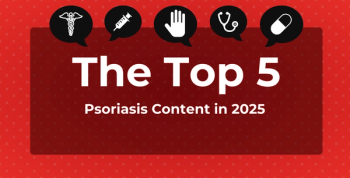
Patients at "D" or "F" Hospitals Face 92% Greater Risk of Avoidable Death, Report Finds
The Leapfrog Group, a national nonprofit organization, this week released the latest hospital safety grades for Spring 2019 in addition to a report compiled in conjunction with the Johns Hopkins Armstrong Institute for Patient Safety and Quality that assessed the number of deaths due to errors, accidents, injuries and infections at all rated hospitals.
The Leapfrog Group, a national nonprofit organization, this week released the latest hospital safety grades for Spring 2019 in addition to a report compiled in conjunction with the Johns Hopkins Armstrong Institute for Patient Safety and Quality that assessed the number of deaths due to errors, accidents, injuries and infections at all rated hospitals.
Researchers who contributed to the report assessed more than 2600 hospitals that received safety grades and found that when compared with “A” graded hospitals, patients at “D” and “F” hospitals face a 92% greater risk of avoidable death; patients at “C” hospitals, on average, face an 88% greater risk of avoidable death; and patients at “B” hospitals on average face a 35% greater risk of avoidable death.
The Leapfrog Hospital Safety Grade uses national performance measures from CMS, the Leapfrog Hospital Survey, and other supplemental data sources to evaluate each hospital. The hospitals were evaluated on 28 measures of publicly available hospital safety data which was analyzed and then results of each measure were weighted based on evidence, opportunity for improvement, and impact.
The panel responsible for evaluating each
The authors found that an estimated 160,000 lives are lost annually from the avoidable medical errors that were accounted for in the report, which is an improvement from 2016, when researchers estimated that there were nearly 205,000 avoidable deaths.
Though the report does note that even hospitals that earned an “A” are not perfectly safe, they are getting safer. “If all hospitals had an avoidable death rate equivalent to ‘A’ hospitals, 50,000 lives would have been saved, versus 33,000 lives that would have been saved by ‘A’ level performance in 2016,” wrote the authors.
Researchers determined a rank for each state in terms of the number of “A” hospitals they have compared with the total number of graded hospitals on the Spring 2019 Leapfrog Hospital Safety Grade. The top 10 states with the highest percentage of “A” hospitals are as
- Oregon, 58.06%
- Virginia, 54.03%
- Maine, 50.00%
- Massachusetts, 48.28%
- Utah, 48.00%
- New Jersey, 45.59%
- Rhode Island, 42.86%
- Ohio, 42.20%
- Texas, 41.43%
- Colorado, 41.03%
Additionally, across all states, the report found that of the 2600 hospitals graded, 32% earned an “A,” 26% earned a “B,” 36% earned a “C,” 6% earned a “D,” and just under 1% earned an “F.” Notably, there were no “A” hospitals in Arkansas, Delaware, the District of Columbia, North Dakota, or Wyoming,.
“The good news is that tens of thousands of lives have been saved because of progress on patient safety,” Leah Binder, president and chief executive officer of the Leapfrog Group, said in a
Newsletter
Stay ahead of policy, cost, and value—subscribe to AJMC for expert insights at the intersection of clinical care and health economics.








































